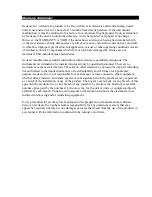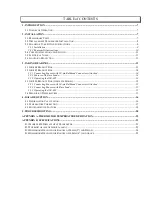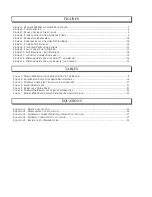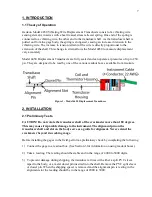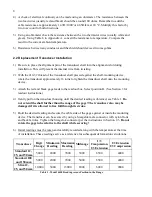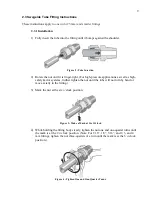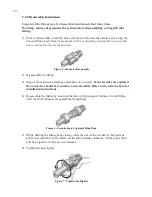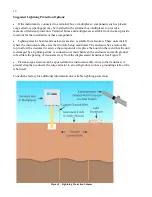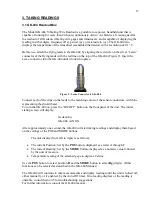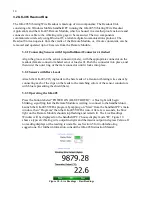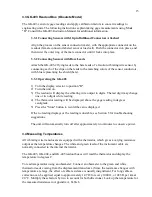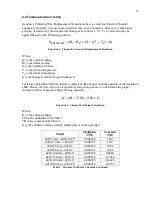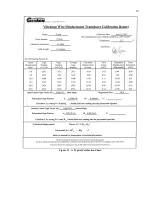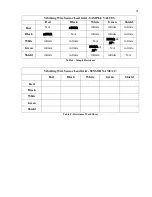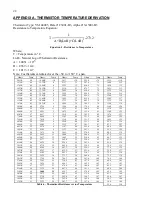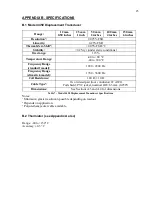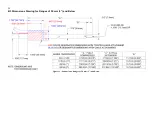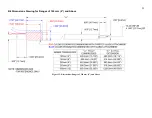
11
2.4 Cable Installation and Splicing
The cable should be routed to minimize the possibility of damage due to moving equipment,
debris or other causes. The cable can be protected by the use of flexible conduit, which can be
supplied by Geokon.
Terminal boxes with sealed cable entries are available from Geokon for all types of applications.
These allow many gages to be terminated at one location with complete protection of the lead
wires. The interior panel of the terminal box can have built-in jacks or a single connection with a
rotary position selector switch. Contact Geokon for specific application information.
Because the vibrating wire output signal is a frequency rather than a current or voltage,
variations in cable resistance have little effect on gage readings; therefore, splicing of cables has
no ill effects, and in some cases may in fact be beneficial. The cable used for making splices
should be a high quality twisted pair type, with 100% shielding and an integral shield drain wire.
When splicing, it is very important that the shield drain wires be spliced together.
Always
maintain polarity by connecting color to color.
Splice kits recommended by Geokon incorporate casts, which are placed around the splice and
are then filled with epoxy to waterproof the connections. When properly made, this type of splice
is equal or superior to the cable itself in strength and electrical properties. Contact Geokon for
splicing materials and additional cable splicing instructions.
Cables may be terminated by stripping and tinning the individual conductors and then connecting
them to the patch cord of a readout box. Alternatively, a connector may be used which will plug
directly into the readout box or to a receptacle on a special patch cord.
2.5 Electrical Noise
Care should be exercised when installing instrument cables to keep them as far away as possible
from sources of electrical interference such as power lines, generators, motors, transformers, arc
welders, etc. Cables should never be buried or run alongside AC power lines; they will pick up
the noise from the power cable, which will likely cause unstable readings. Contact the factory
concerning filtering options available for use with the Geokon dataloggers and readouts.
2.6 Lightning Protection
Unlike numerous other types of instrumentation available from Geokon, displacement
transducers do not have any integral lightning protection components, such as transorbs or
plasma surge arrestors. Usually this is not a problem, however, if the instrument cable is
exposed, it may be appropriate to install lightning protection components, as the transient could
travel down the cable to the gage and possibly destroy it.



